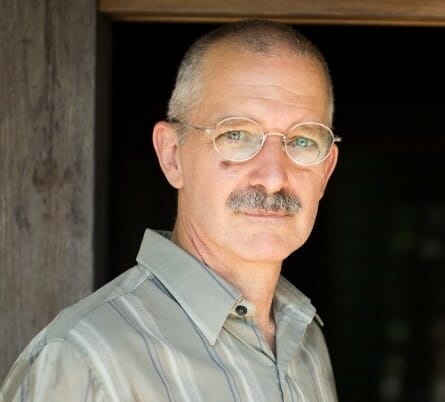A Couple of Amazing People from Sasayama

A Couple of Amazing People from Sasayama
There are many well known people from Sasayama, not the least of which is Katsura Bunchin, a Rakugo artist with a quick wit and an exceptional talent with words. (Rakugo is Japan’s humorous storytelling art and dates from around 1700.) Among his many other accomplishments, in 2010 he received the Medal of Honor with Purple Ribbon (a high award from the Japanese government) for his contribution to Japanese arts and culture. There are also many athletes, musicians, and TV personalities that are from Sasayama, but today I’d like to introduce you to two amazing people that are not nearly as well known but just as deserving.
Hirao Chikka (1856-1939)
Chikka-san, as he is affectionately known by local tea ceremony people and art lovers, was born to an artist who painted on Ojiyama pottery in Sasayama. When he was 19, he set off for Kyoto to become a painter and studied with the Maruyama Shijo School of painting. He later became an apprentice of the famous Nanga painter Chikuden Tanomura. (Simply put, Nanga is a Japanese version of traditional Chinese painting.)
Together, Chikka-san and Tanomura established the Kyoto Prefectural School of Painting, which later became the famous Kyoto City University of Arts. Chikka-san went on to establish his own style and participated in the founding of the Japanese Nanga Association. He left many great paintings behind, and you might even find some as you move around Sasayama, where I’ve seen decorating sliding doors. One local museum sometimes has shows of his work.

My wife found this folding screen for sale on the internet. It a collection of paintings by various artists (all of which are Nanga artists we assume), including Chikka-san.


These are the two paintings made by Chikka-san on the folding screen.

This monument marks the location of Chikka-san’s birthplace in Kawaramachi. The main stone has his name carved into it. The square dark stone on the right gives a brief explanation of Chikka-san.

And saving the best for last, this drawing of plum blossoms in the moonlight was painted by Chikka-san. The calligraphy was written by the tenth head of the Yabunouchi school of tea (which I practice and teach). Yabunouchi previously had a branch in Sasayama when the tea ceremony was much more popular, and I’ve been shown records of past tea ceremonies held by Yabunouchi in Sasayama. Obviously Yabunouchi tea people mingled with the famous painters of the time. The calligraphy reads, “A garden, plum flowers lit by a cloudy moon.”
Myoudou Sousen (1768-1837)
I was at an antique store in Nara and by chance found the set of lacquered tea caddies shown below. They were obviously very old, as you can tell from the photos, and I enjoyed using them for years before I finally did some research on the person who signed the box shown below. (The writing on the box for something used in the tea ceremony gives some of the history of the piece which is an important part of the value of the piece and an interesting addition that can be discussed with guests during a tea ceremony.)

To my delight, the man who had written on the box was Myoudou Sousen, the 429th high priest of the Daitokuji Temple Complex in Kyoto, and he was born in Sasayama. (Daitokuji is considered to be the center of the tea ceremony world. Both Sen no Rikyū and Kobori Enshu, two of the most famous tea people historically, had tea rooms inside the complex.)
Sousen was born to the principle retainer of the Sasayama Domain. He studied at several temples, one closely related to the famous priest Ikkyū (who is also a revered tea person). Sousen was also skilled in the ways of the tea ceremony. He was skilled in poetry and well known for his painting on scrolls, principally paintings of bamboo.

The lacquered tea caddies mentioned above are a matched set, but with different Kanji characters written on them. One has the character for plum (梅) for use in late winter, just before the plum trees bloom, and the other has the character for pine tree (松) for use any time of the year (because pine trees are traditionally considered to be sacred and are used as symbols for celebrations).
My wife remade the bags that the tea caddies are stored in. You can tell something about the age of the tea caddies from the condition of the previous bags (the ones in the foreground in the photo), literally worn to threads.

When doing research for this blog, I found this scroll for sale on the internet. My wife agreed, so we purchased it and are looking forward to using it in a tea ceremony in the near future. I haven’t been able to identify the person who did the calligraphy, but it’s someone named Sendou or Senfuji (depending on how the characters are read). It is strange that his title (“lord,” or 公 in Japanese) is included with his name, because he would not write his own title, leading us to believe that someone else signed his name for him (in which case, they would have to give his title). This idea seems to be supported by the difference in the calligraphy between the poem and signature, but at this point we’re just guessing. (That’s part of the fun of using old tea things. It’s an education that never ends. Luckily, when I use this scroll in a tea ceremony, some well-informed guest will add to our knowledge.)
The calligraphy is difficult to translate, but it goes something like this: “Each node a thousand years, see the flourishing green of the Kuretake.” (Kuretake = a type of bamboo) Bamboo generally grows to maximum height in one year and each cane lives less than 10 years for most varieties. Even a bamboo grove is unlikely to life more than a 100 years or so, making this poem very figurative. In Japanese culture, however, bamboo is seen as eternally new because it remains green year around. Also, this poem is address to someone of high standing due to the word used for “you” (as in “you should see,” which I’ve simplified to just “see” in English).














